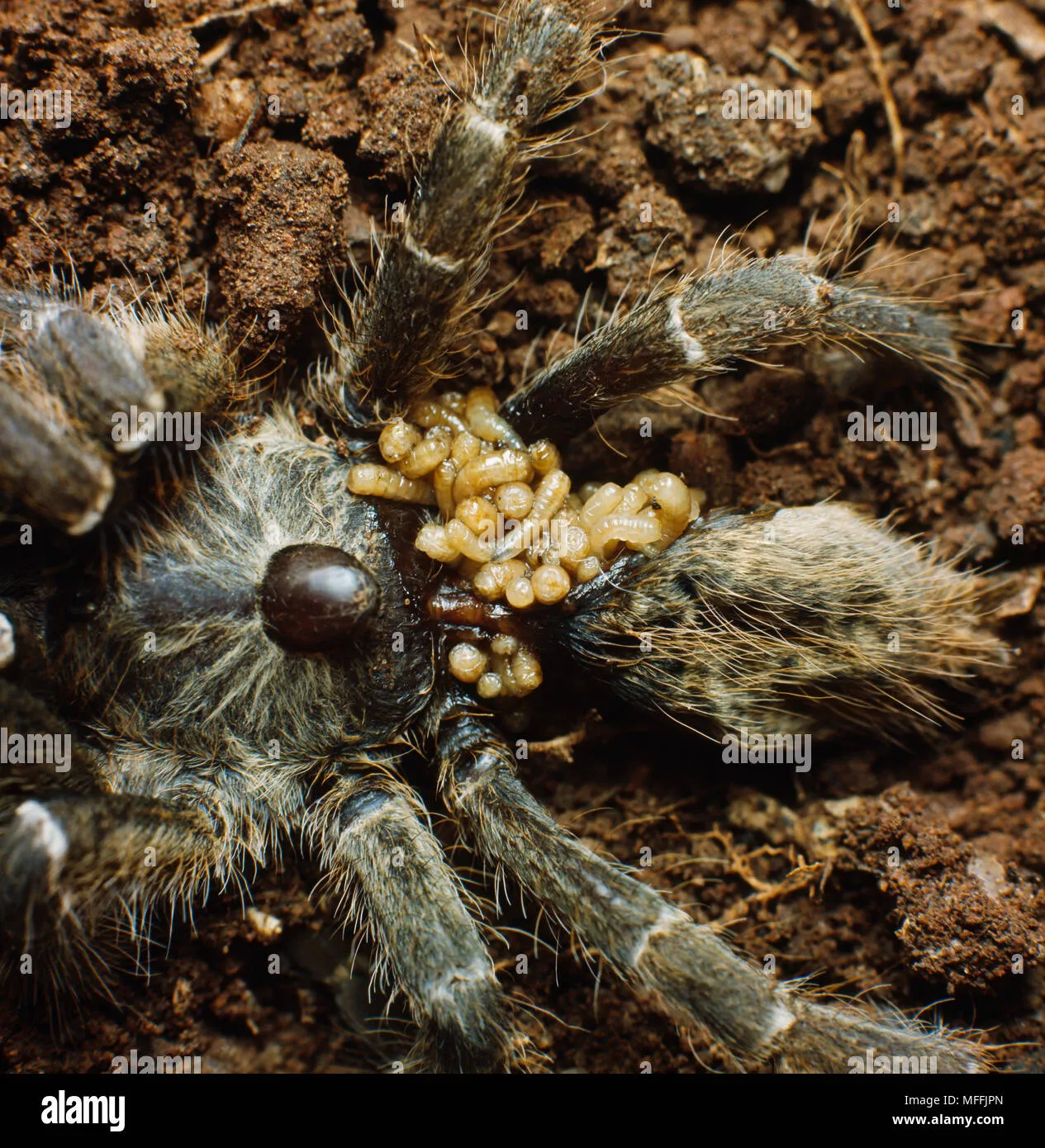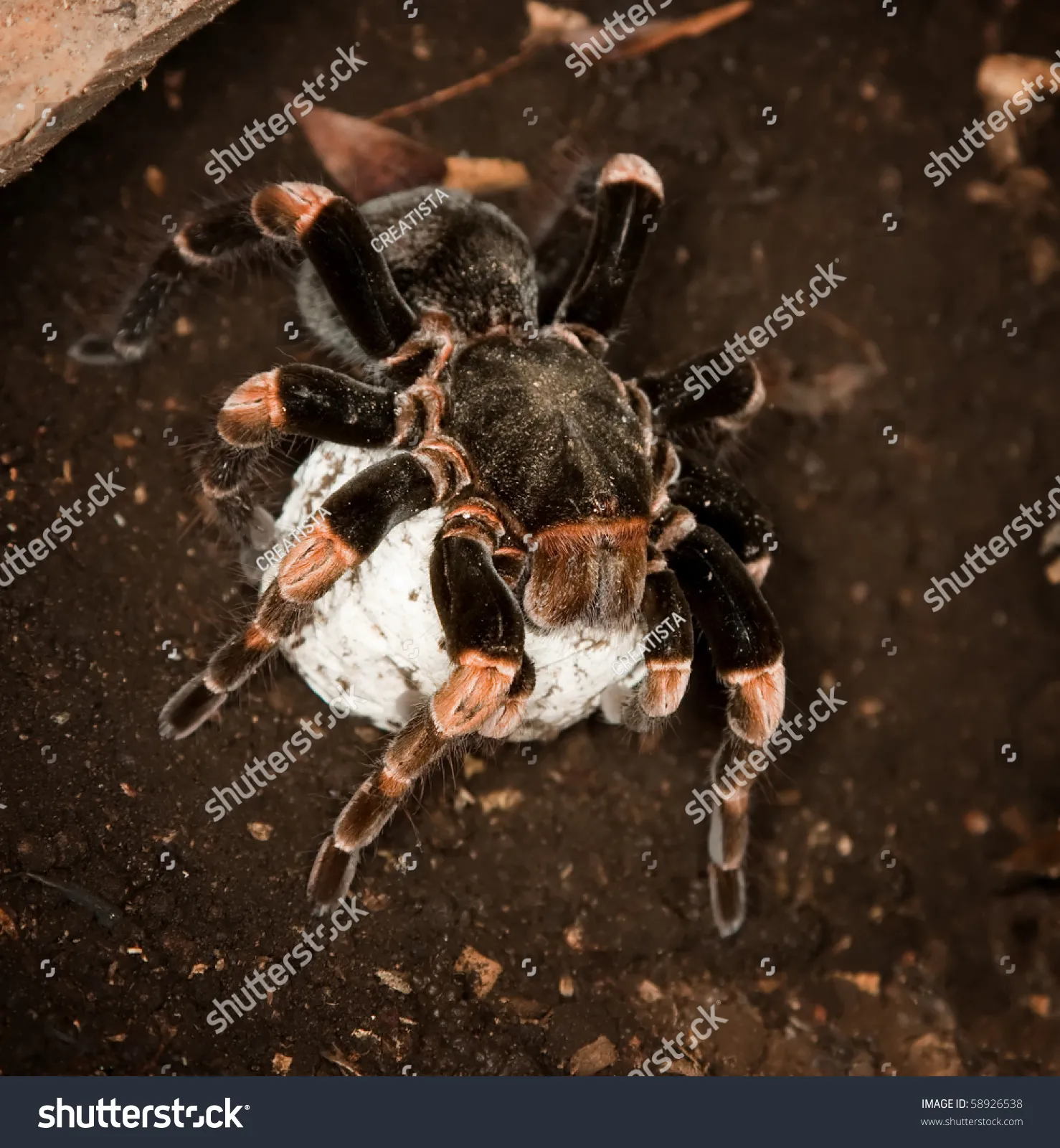What are Tarantula Eggs
Tarantula eggs represent the beginning of a new generation of these fascinating arachnids. Unlike some animals that give birth to live young, tarantulas, like all spiders, reproduce by laying eggs. These eggs are not laid individually; instead, the female tarantula carefully constructs a silken sac, also known as an egg sac, to protect them. The egg sac is a marvel of natural engineering, providing a safe and controlled environment for the developing eggs. Inside this sac, the eggs are shielded from predators, harsh environmental conditions, and desiccation, ensuring the highest chance of survival for the offspring. The number of eggs in a sac can vary widely depending on the species, the female’s age, and her overall health, with some species producing only a few dozen eggs while others can lay several hundred.
The Formation of Tarantula Eggs
The formation of tarantula eggs is a complex biological process that begins with the female tarantula’s internal reproductive system. After mating, the female stores the sperm received from the male. When the time is right, she begins the process of producing eggs within her ovaries. These eggs are initially small and undifferentiated but gradually accumulate nutrients and yolk, which will sustain the developing embryo. The eggs then travel through the female’s oviducts, where they are fertilized by the stored sperm. It is a critical moment, as this fertilization kickstarts the embryonic development. The female’s body then secretes the silk to create the protective egg sac around the fertilized eggs. This sac is not just a simple container; it is a carefully crafted structure that provides the optimal environment for the eggs to develop.
The Role of the Tibia in Reproduction

The role of the tibia, the fourth segment of the leg, in tarantula reproduction is mainly associated with the male tarantula. During the mating process, the male tarantula uses his pedipalps, which are modified appendages near the mouth, to transfer sperm to the female. However, the tibia plays a crucial role in the preceding courtship behavior. The male tarantula often uses specialized structures, sometimes located on the tibia or other leg segments, to create vibrations or signals that attract the female. These vibrations can be perceived by the female, signaling the male’s presence and intent to mate. Additionally, the male’s tibia might possess spurs or hooks that are used to secure his position during mating, preventing the female from attacking him. Although the tibia isn’t directly involved in the egg-laying process, it plays a pivotal part in the behaviors leading to the creation of the eggs.
What Happens During Egg Laying?
Egg laying is a delicate process for the female tarantula, and it is a critical phase in the life cycle. Once the eggs are fertilized and ready, the female begins to spin a silken mat. She then deposits the eggs onto this mat, carefully arranging them. The female then deposits the eggs onto this mat, carefully arranging them. After the eggs are laid, she will spin more silk to cover the eggs, eventually creating a protective egg sac. The process can take several hours, and the female tarantula is highly attentive during this period. The size and shape of the egg sac vary depending on the tarantula species, ranging from small, compact sacs to larger, more elongated structures. The female then seals the sac, often guarding it vigilantly until the spiderlings hatch. It is vital for the female to keep the egg sac in a safe place, protected from predators and environmental hazards.
The Development of Tarantula Eggs
The development of tarantula eggs within the protective egg sac is a fascinating process, characterized by distinct stages. Initially, the eggs are relatively simple, with a yolk that provides nourishment for the developing embryo. Over time, the embryo begins to differentiate, forming the basic structures of a tarantula, including the body segments, legs, and chelicerae. The rate of development depends on several factors, including temperature and humidity. Warmer temperatures generally speed up the development process, while colder temperatures slow it down. The female tarantula often provides some degree of environmental control by selecting a suitable location for the egg sac. Within the egg sac, the embryos will molt multiple times. These molts are essential for the spiderlings to grow and develop. Once the spiderlings have completed their development and molting, they will be ready to hatch, starting the next stage of their lives.
The Incubation Period and Hatching

The incubation period for tarantula eggs varies depending on the species and environmental conditions. It can range from a few weeks to several months. The egg sac provides a stable environment, but temperature and humidity levels still influence the hatching time. During the incubation period, the developing spiderlings undergo several molts within the eggs. When the spiderlings are ready to hatch, they break open the eggshells, emerging into the egg sac. Initially, the spiderlings are small and relatively defenseless, relying on the yolk reserves from the eggs. The mother tarantula often remains vigilant, guarding the egg sac and protecting the newly hatched spiderlings from potential threats. The hatching process marks a crucial transition, as the spiderlings must then begin their independent lives, with the goal of molting and maturing into adult tarantulas.
Caring for Spiderlings After Hatching
Caring for tarantula spiderlings requires a specific approach to ensure their survival and healthy development. The newly hatched spiderlings are very small and fragile, making them susceptible to environmental changes and predation. Keeping the spiderlings in a secure environment, such as a small, well-ventilated enclosure, is essential. Providing them with a suitable substrate that retains humidity, such as slightly moistened coco coir, is also very important. Spiderlings need to be fed small, live insects, such as fruit flies or pinhead crickets. Regular feeding is crucial to support their rapid growth, but overfeeding should be avoided. Maintaining the appropriate temperature and humidity levels is also important. Regularly misting the enclosure and using a small heat source can help maintain the optimal conditions. Spiderlings need to be monitored closely for any signs of illness or stress, such as lethargy or lack of appetite. They need to be provided with water, either through a small water dish or by misting the enclosure. Separating the spiderlings into individual enclosures is often recommended to prevent cannibalism as they grow.
